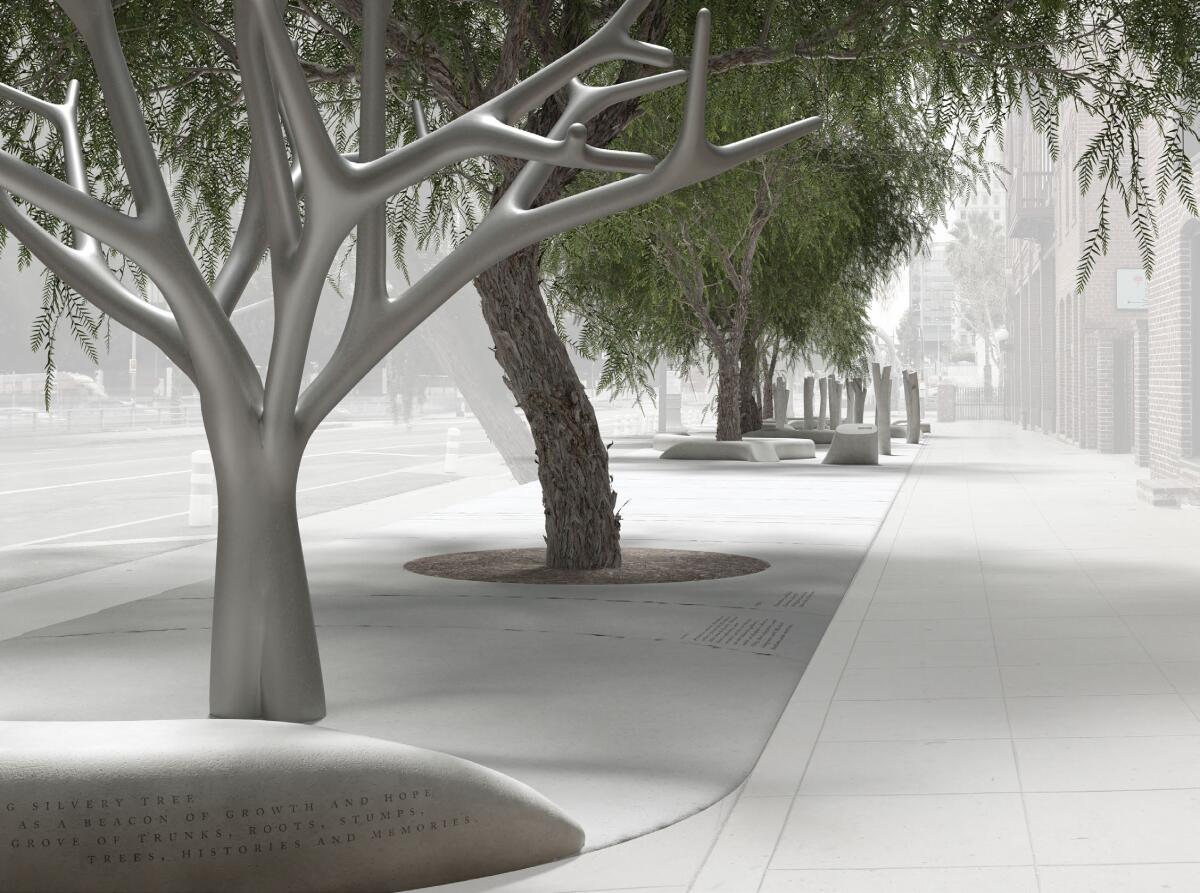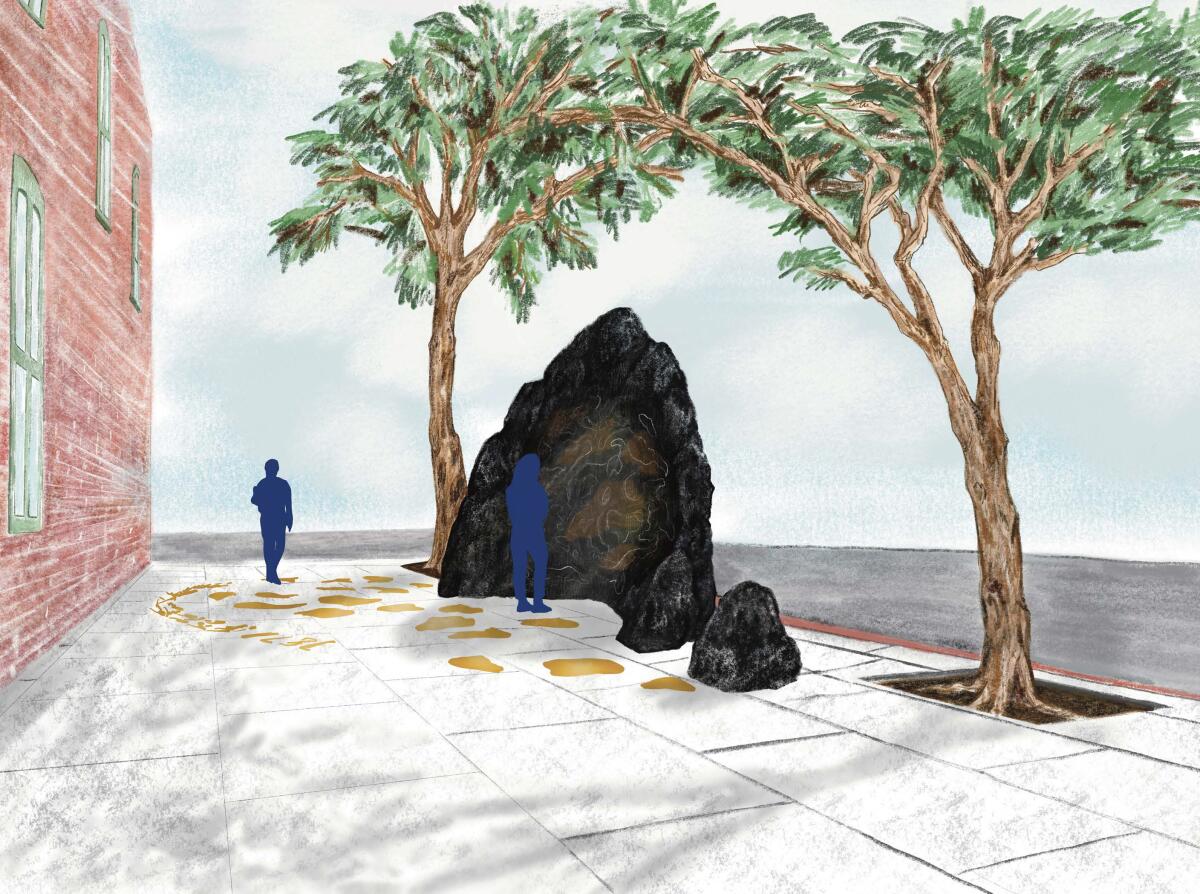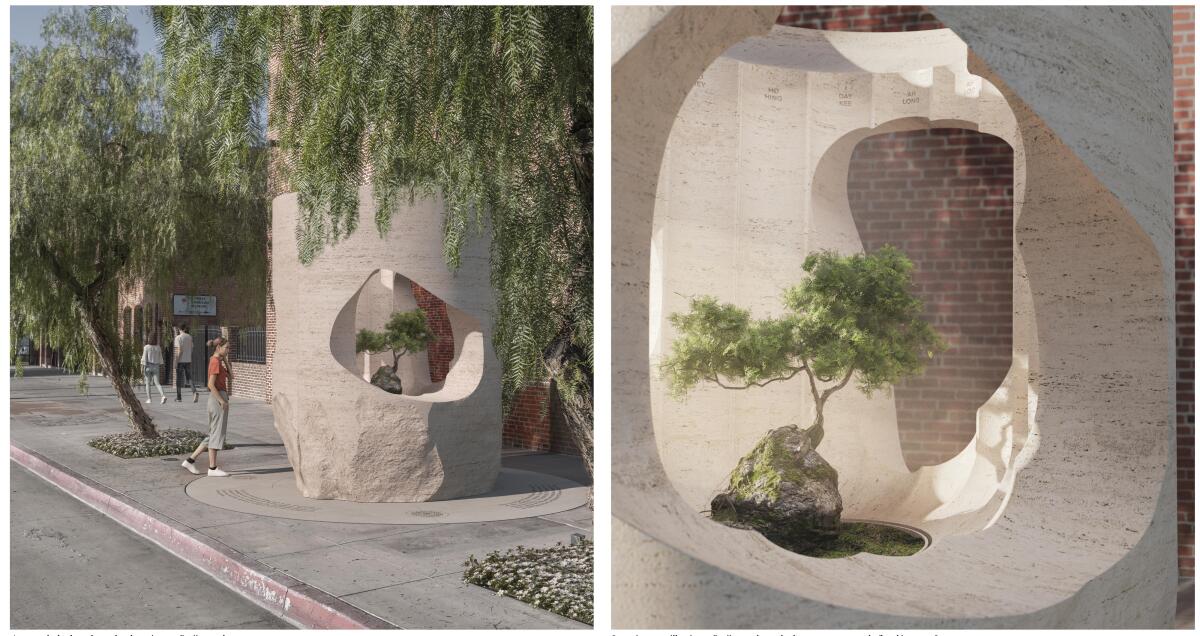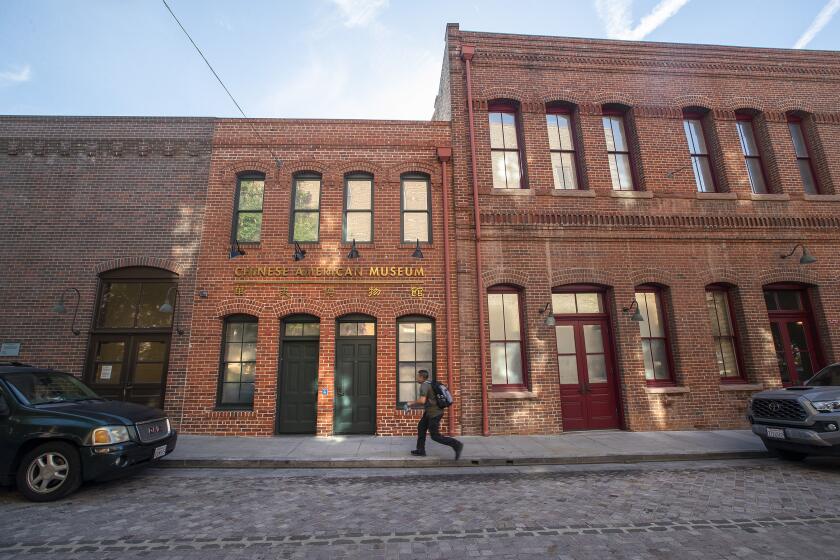Six finalists chosen for memorial to L.A.’s 1871 Chinese Massacre

- Share via
In 2021, the Los Angeles mayor’s office kicked off a process to create a memorial to mark the Chinese Massacre of 1871, a brutal mob attack that left 18 Chinese men dead at a time when L.A.’s population was barely 5,700. Now that selection process has reached the finalist stage.
Six designs have been chosen by a nine-member review panel made up of artists, architects, curators and other cultural leaders, per an announcement last week from the Los Angeles Department of Cultural Affairs and El Pueblo de Los Angeles Historical Monument. The proposals take various approaches to marking the horrific event, which spread across downtown after being sparked near the Plaza de Los Angeles, a significant Chinese enclave at the time.
Two reports — by the city of L.A. and Monument Lab — reveal blind spots in how California marks its history. A memorial to the Chinese Massacre sets a new agenda.
A submission by artist Sze Tsung Nicolás Leong and writer Judy Chui-Hua Chung is inspired by the spiritual and protective properties of banyan trees in Guangdong, the province from which many early Chinese immigrants originated. Their proposal features installations composed of sculptural objects resembling petrified trees in the various locations where the massacre took place.
A proposal by L.A.-based firm Fung + Blatt Architects likewise opts for multiple locations, marking the sites of lynchings — near the plaza and south of the 101 Freeway. Their monuments consist of boulder-like structures harboring infinity mirrors, which provide the illusion of bottomlessness when viewed from above.
Sonam Lhamo, Jiawei Yao, Yiying, a team from Seattle, focused its proposal on a single location in front of the Chinese American Museum on Los Angeles Street. It was around this site — in an alley that has since been obliterated by an on-ramp to the 101 Freeway — that the violence began. The team visually unified opposite sides of the street with pavings of red brick, which function as a visual bridge. The paved zone connects with a red brick memorial sanctuary on one side of the street.

The concept submitted by L.A. architectural firm Frederick Fisher and Partners and artist Candice Lin also sticks to the museum site. Their proposed installation is a large-scale version of a traditional scholar’s rock — formations that are placed within Chinese gardens or on wooden podiums and used as objects of contemplation. Their idea centers on a large monolith of black stone featuring carved images; 18 brass shards embedded into the pavement would mark the 18 lives lost.
A proposal by artists Anna Sew Hoy and Zhu Jia, partnering with the L.A.-based architectural studio Formation Association, likewise unifies the site in front of the Chinese American Museum — but it achieves this through a series of vertical pillars linked to one another at the top by an undulating metallic ribbon. Each pillar marks an event in the chronology of the massacre; secondary markers also serve to indicate other important massacre sites downtown.
A pair of architectural studios — Figure in San Francisco and J. Jih from Boston — teamed up for a design that also draws from a traditional Chinese aesthetic practice: penjing, the art of creating miniaturized trees. The principal monument, a limestone cylinder, would contain a small tree as well as the names of the dead. Smaller-scale markers would be installed at other memorial sites.

L.A. has a long history of anti-Asian sentiment. In 1871, a mob attacked Chinese people, killing 19, including a 14-year-old boy and a physician.
For much of Los Angeles’ history, the story of the massacre was absent from the city’s landscape of memorials and monuments. Finally, in 2001, the Chinese American Museum installed a sidewalk plaque commemorating the massacre. But in recent years, there has been a push for greater recognition of one of L.A.’s most violent episodes, which was part of a wave of anti-Chinese violence and legislation in the 19th century.
Next month, the design teams will formally present their proposals to the public via Zoom. A date and time for that event has not yet been set, but future updates — along with illustrated presentation decks for all six design concepts — can be found on the department’s website at culturela.org.
More to Read
The biggest entertainment stories
Get our big stories about Hollywood, film, television, music, arts, culture and more right in your inbox as soon as they publish.
You may occasionally receive promotional content from the Los Angeles Times.












